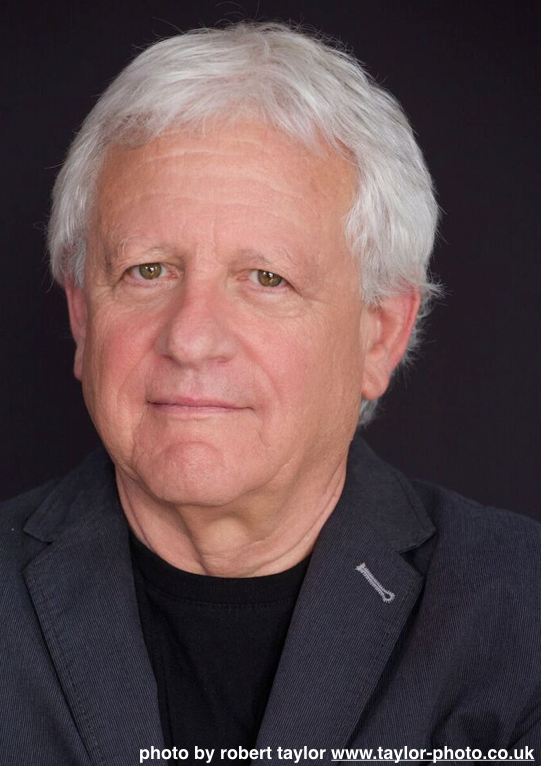Wearable and Implantable Chemical Sensors – Opportunities and Challenges

Dermot Diamond
Principal Investigator, Insight Centre for Data Analytics,
National Centre for Sensor Research, Dublin City University, Dublin 9, Ireland
Abstract: Despite the wide range of applications and tremendous potential of implantable sensors targeting chemo/bio-markers, bringing actual practical devices fully to market continues to be inhibited by significant technological barriers associated with long-term reliability, which is a key requirement for implants. This is so, even with devices that appear to be well engineered, focused on apparently fairly solid markets, and based on well-established sensing principles. Wearable chem/bio-sensors offer an interesting alternative, intermediate between the long-term vision of implantable devices, and the single use-disposable devices that are the current dominant use model. For example, wearable patch-type devices employing micro-needles for minimally invasive sampling of interstitial fluid enables through-skin continuous monitoring of glucose for up to two weeks. However, despite this apparently promising breakthrough, large-scale adoption remains frustratingly elusive, and some users experience infection, allergic responses and issues related to adhesion. To bypass these issues, other body fluids have been targeted that allow non-invasive sampling. For example, wearable platforms for monitoring sweat chemistry in real-time have recently been reported. However, while there are important applications associated with sweat chemistry such as hydration status, sweat does not provide the rich diversity of diagnostic information accessible from blood. The move by Google into the biosensing space is another interesting development. In partnership with Novartis, Google is focusing on glucose monitoring through a contact lens with an integrated electrochemical sensor that can communicate wirelessly, function for 24 hours (lenses are changed daily), and is in contact with ocular fluid, which has a glucose composition related to that of blood. Similarly, the period up to the launch of the Apple iWatch witnessed a frenzy of speculation about whether it would have an integrated glucose monitoring capability. Clearly, however, wearable chem/bio-sensors are inherently more complex and less dependable than the well-established physical sensors, as reflected in the difficulties in bringing these devices to market. In this paper, I will examine the issues that currently limit the applicability of chemo/bio-sensors in wearable and implantable scenarios, and present ways through which the effective autonomous lifetime of these more complex sensors might be extended from the current norm of (at most) several days, towards much longer periods (ideally years), for example, through the development of ‘sensing systems’ based on bioinspired microfluidics.
Biography: Dermot Diamond received his Ph.D. and D.Sc. from Queen’s University Belfast and joined DCU in 1987. He was Vice-President for Research at Dublin City University (2002-2004) and was director (2007-2015) and founding member of the National Centre for Sensor Research (www.ncsr.ie) at DCU. In 2002, he was awarded the inaugural silver medal for Sensor Research by the Royal Society of Chemistry, London. He was awarded the DCU President’s Award for Research Excellence (2006) and the DCU President’s Award for Innovation (2015). In May 2014, in recognition of his academic contributions and achievements, he was admitted to Membership of the Royal Irish Academy. In April 2015 he was awarded the Boyle Higgins Gold Medal by the Institute of Chemistry of Ireland in recognition of his research achievements. He is currently a principal investigator in the SFI INSIGHT Centre (http://www.insight-centre.org) and a member of the EU Future and Emerging Technologies programme advisory group (FETAG). His research is focused on the fundamental science of stimuli responsive polymers, the development of futuristic autonomous chemical sensing platforms, and the use of analytical devices and sensors as information providers for wireless networked systems i.e. building a continuum between the digital and molecular worlds. Further details of his research can be found at http://adaptivesensors.com/.
How biology perceives chemistry: stimulus processing in the mammalian olfactory system

Stuart Firestein
Columbia University
USA
Abstract: The mammalian nose is arguably the best (current) chemical detector on the planet, able to detect and discriminate a large number and diverse array of molecules. This is accomplished in part by a large number of receptors (encoded by more than a thousand different genes in many species) and a very shallow central circuit, comprising only 2 synapses from the outside world to the primary olfactory cortex. While the discovery of the large family of receptors seemed to provide a molecular basis for understanding olfaction, this dream has been somewhat upended by recent findings in both the periphery and the CNS. In the periphery we must take into account antagonistic effects of many odors and a new classification of odors according to medicinal chemical principles versus pure organic chemistry. In the periphery we see a cortex that may be shaped more by output than input, as is the case in other sensory cortices. Here we will discus how these findings are forcing us to adopt new strategies for understanding peripheral olfaction and for taking a new perspective on the central processing of odor information.
Biography: Dr. Stuart Firestein is the former Chair of Columbia University's Department of Biological Sciences where his laboratory studies the vertebrate olfactory system, possibly the best chemical detector on the face of the planet. Aside from its molecular detection capabilities, the olfactory system serves as a model for investigating general principles and mechanisms of signaling and perception in the brain. The olfactory system represents a unique opportunity for these studies as it processes sensory information over a very short neural pathway – giving rise to striking perceptions and memories with much less processing than the visual system requires, thus making it a more tractable system to understand. The laboratory has published over 100 scientific articles on their research. His laboratory seeks to answer that fundamental human question: How do I smell?
Dedicated to promoting the accessibility of science to a public audience Firestein serves as an advisor for the Alfred P. Sloan Foundation’s program for the Public Understanding of Science, where he reviews scripts for the Ensemble Studio Theatre/Sloan Science and Technology Program, and for the Tribeca and Hamptons International Film Festivals. Recently he was awarded the 2011 Lenfest Distinguished Columbia Faculty Award for excellence in scholarship and teaching. He is a Fellow of the AAAS, an Alfred Sloan Fellow and a Guggenheim Fellow. At Columbia he is on the Advisory boards of the Center for Science and Society (CSS) and the Presidential Scholars in Society and Neuroscience –both centers for interdisciplinary work between the sciences and the humanities. His book on the workings of science for a general audience called Ignorance, How it Drives Science was released by Oxford University Press in 2012. His new book, Failure: Why Science is So Successful, appeared in October 2015. They have been translated into 10 languages.



